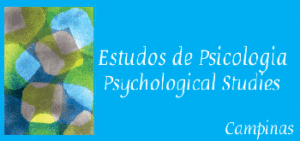Tatiana de Cassia Nakano and Solange Muglia Wechsler, Pontifícia Universidade Católica of Campinas, Higher Education Program of Post-Graduate Studies in Psychology, Campinas, São Paulo, Brasil
 Researchers at the Pontifical Catholic University of Campinas, Tatiana de Cassia Nakano and Solange Muglia Wechsler, in “Creativity and Innovation: Skills for the 21st Century”, published in Psychology Studies (Campinas) (Vol. 35, No. 3) concepts of creativity and innovation, taking the importance of each as positive skills that favor the expression of human potential. The contribution of the text mainly focuses on the presentation and discussion of the relationship established between the constructs, considering, mainly, the research gap with this objective.
Researchers at the Pontifical Catholic University of Campinas, Tatiana de Cassia Nakano and Solange Muglia Wechsler, in “Creativity and Innovation: Skills for the 21st Century”, published in Psychology Studies (Campinas) (Vol. 35, No. 3) concepts of creativity and innovation, taking the importance of each as positive skills that favor the expression of human potential. The contribution of the text mainly focuses on the presentation and discussion of the relationship established between the constructs, considering, mainly, the research gap with this objective.
In the challenge of considering the relationship between creativity and innovation, the authors could note that both constructs have been shown to be important for different areas of knowledge, defined as complex and subject to environmental and social influences. Given the relevance of such skills, the authors conclude on the importance of students and practitioners being encouraged to develop creativity and innovation valued as essential skills for the 21st century.
Throughout the text, the authors sought to answer questions such as “is innovation different from creativity?”, “Is creativity necessary for innovation to occur?”. The literature review indicated that both constructs have been intensively investigated, but in isolation. The relationship between them is beginning to be investigated, being, today, more exploratory than based on theoretical models.
The review showed the existence of three explanatory aspects. The first one states that innovation and creativity are synonymous constructs when considering the final product (DE BREU et al., 2011). The second approach supports the idea that they would be distinct and unrelated constructs. Creativity would be defined as the first stage of a problem-solving process, focused on an individual level, while innovation would focus on the implementation of the idea and its acceptance at a more staff level (REITER-PALMON, 2011). Finally, the third strand argues that they would be complementary constructs, creativity being a necessary precondition for innovation (JOO; MCLEAN; YANG, 2013).
In the challenge of addressing the relationship between the two themes, it should be noted that both creativity and innovation have historically been complex phenomena and subject to numerous contextual and social influences.
References
DE DREU, C. K. W. et al. Group creativity and innovation: A motivated information processing perspective. Psychology of Aesthetics, Creativity and the Arts, v. 5, n. 1, p. 81-89, 2011. ISSN: 1931-3896 [reviewed 20 September 2018]. DOI: 10.1037/a001798. Avaliable from: http://www.academia.edu/16737500/Group_creativity_and_innovation_A_motivated_information processing perspective
JOO, B. K., McLEAN, G. N. and YANG, B. Creativity and human resource development: An integrative literature review and a conceptual framework for future research. Human Resource Development Review, v. 12, n. 4, p. 390-421, 2013. ISSN: 1552-6712 [reviewed 20 September 2018]. DOI: 10.1177/1534484313481462. Avaliable from: http://journals.sagepub.com/doi/10.1177/1534484313481462
REITER-PALMON, R. Introduction to special issue: The Psychology of Creativity and Innovation in the workplace. Psychology of Aesthetics, Creativity and the Arts, v. 5, n. 1, p. 1-2, 2011. DOI: 10.1037/a0018586. Avaliable from: http://www.apa.org/pubs/journals/special/5750501.aspx
To read the article, access
NAKANO, T. C. and WECHSLER, S. M. Creativity and innovation: Skills for the 21st Century. Estud. psicol. (Campinas) [online]. 2018, vol.35, n.3, pp.237-246. ISSN 0103-166X. [viewed 7 December 2018]. DOI: 10.1590/1982-02752018000300002. Available from: http://ref.scielo.org/gtfckq
External links
Estudos de Psicologia (Campinas) – ESTPSI: www.scielo.br/estpsi
CriaBrasilis: http://www.criabrasilis.org.br
Como citar este post [ISO 690/2010]:


















Recent Comments